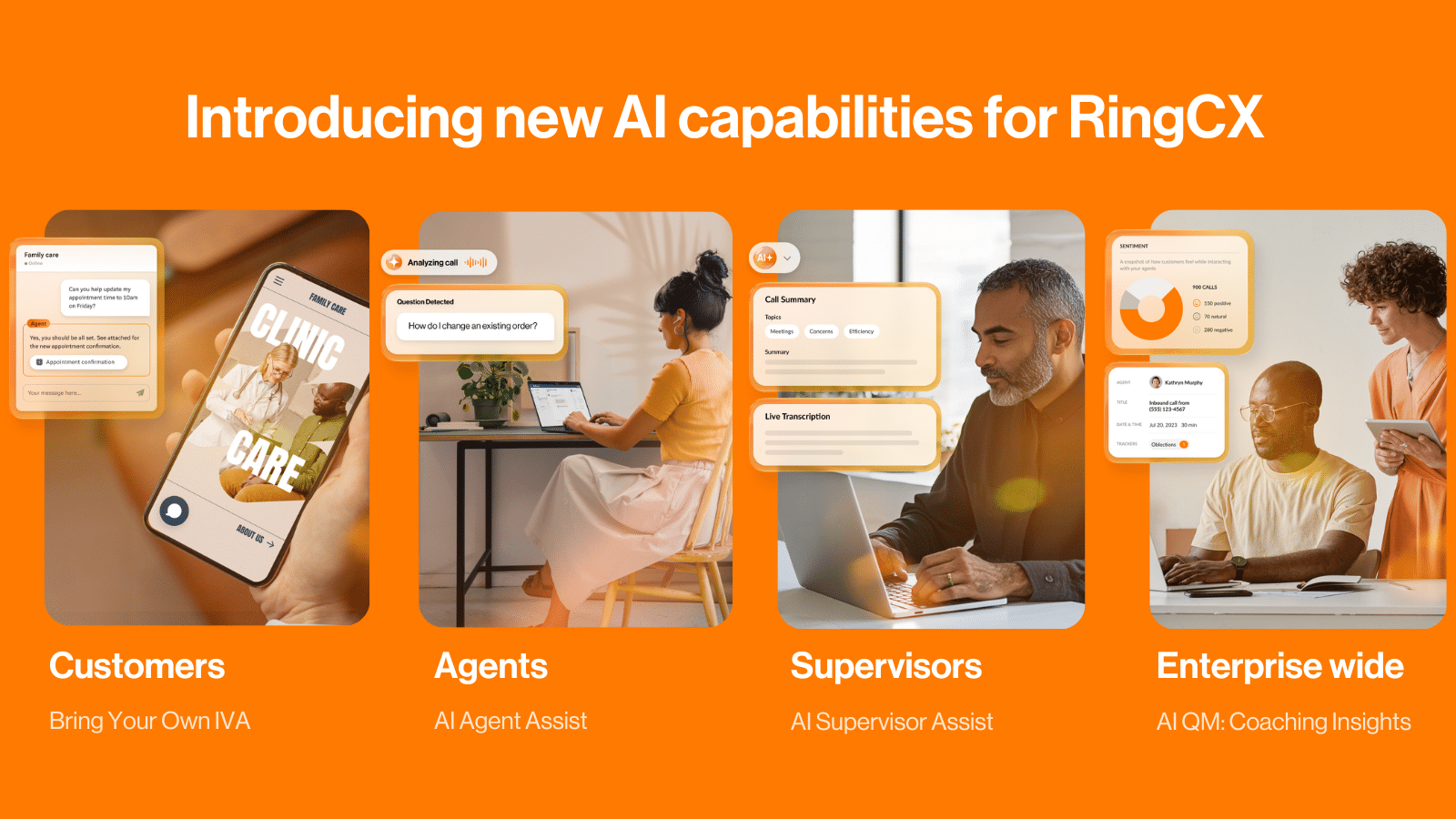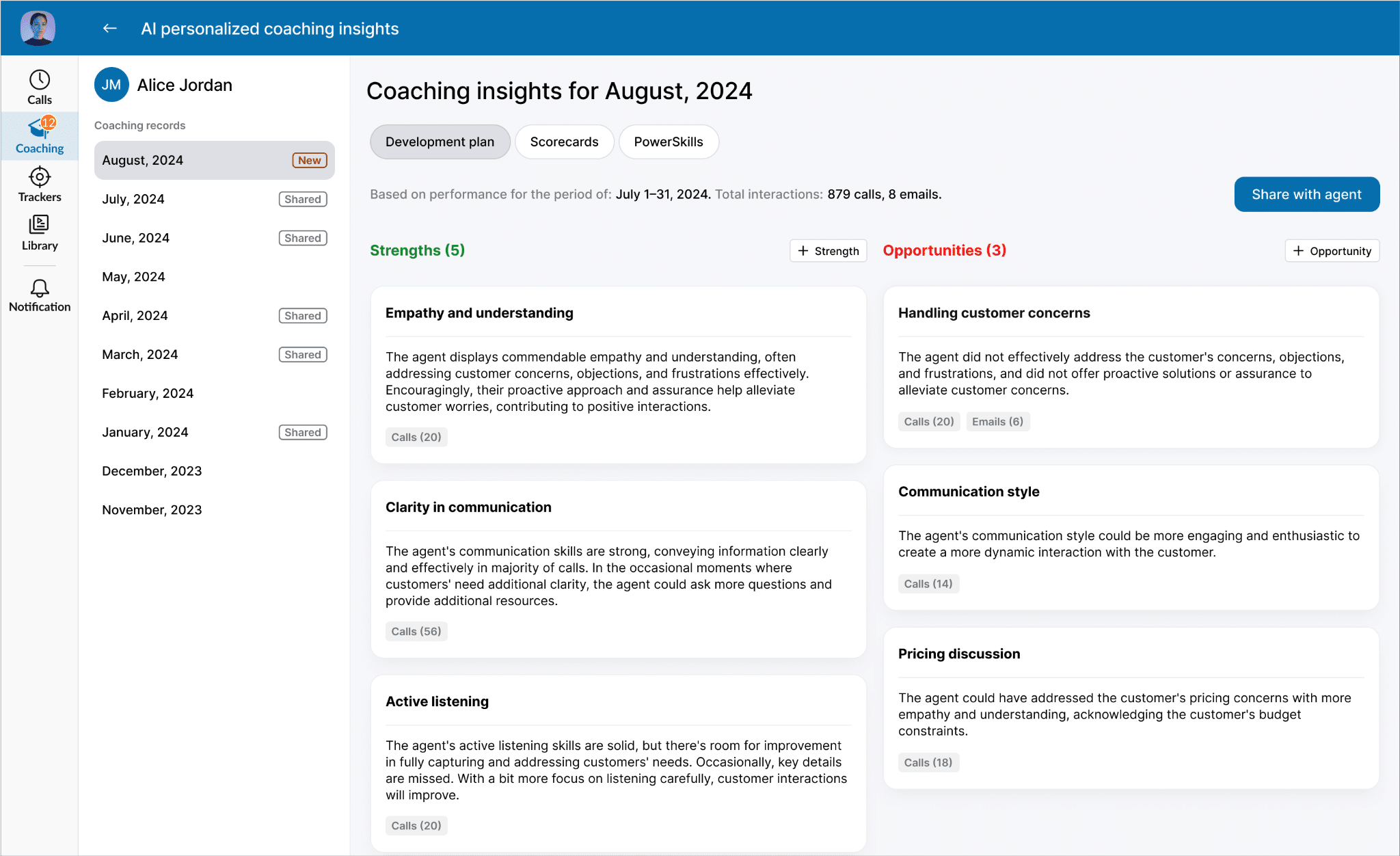The cloud-based contact center space—CCaaS—has become very crowded, not because the barriers to entry are low, but because there are pressing needs that the status quo is not able to meet. Today’s digital-first consumers have higher customer service expectations than what contact centers can support based on their legacy technologies and systems. Contact center leaders know they must modernize to provide a better customer experience—CX—and there are now many options to choose from.
RingCentral is not new to the contact center space, and has long-supported customer needs via their partnership with NICE. This best-of-breed approach works well with RingCentral’s larger customers, but is not ideal for their broader customer base, and to address that, RingCX, RingCentral’s native CCaaS solution, was launched last November. The offering was well-received from the start, and on the heels of a solid Q2 earnings report, it has now reached critical mass with a number of milestones and updates worth noting.
The first update to note is that RingCX has now been deployed with over 350 customers, so the momentum has been strong. Pureplay CCaaS providers continue to do well, but RingCentral is responding to a broader demand that doesn’t require purpose-built, enterprise-scale solutions, but does need more than an entry-level solution. That’s the market RingCX is built for, and given RingCentral’s extensive UCaaS footprint, adding their own CCaaS is a natural way to deepen their presence.
Also worth noting is their claim to having added over 1,300 features to the platform since beta state. While I can’t vouch for every single feature, the number is impressive, and speaks to the bigger story that RingCentral is committed to innovation. With CCaaS still being in high-growth mode, the ability to innovate continuously is key to staying ahead of the market. The Q2 earnings report backs this up, with YTD R&D spending at $160 million. This translates into a healthy 13.5% of revenues, and is comparable to their 2023 R&D level.
How AI is Driving Value for RingCX
AI has only been recently part of the CCaaS story, but it’s become the prime driver, both for how vendors innovate, and how contact centers derive benefit. A key reason for AI’s dominance is its transformative nature. Not only does it help contact centers modernize like never before, but its impact goes well beyond a point solution for one type of end user.
Building on this, RingCX does much more than a conventional CCaaS offering. With RingCentral’s telephony pedigree, contact centers get enterprise-grade voice quality and five 9s reliability. Add to that extensive CRM integrations and support for over 20 digital channels, and RingCX provides solid capabilities for a wide range of contact centers.
Adding the AI layer now takes RingCX to another level that translates into new benefits for the entire contact center operation, not just for customers. Every persona across the CX value chain has a distinct set of challenges, and AI provides a distinct set of solutions for each one. Here is what the AI component of RingCX brings for four key personae.

Customers: Intelligent Virtual Agent
AI can directly impact CX in many ways, but IVA addresses a very challenging set of pain points. Self-service is typically based on IVR, which by today’s standards has multiple shortcomings. Given the importance of self-service to handle rising call volumes, this has become a leading AI use case in the contact center. Not only does this give customers better options to fully automate their inquiries, but it shortens the wait times for getting service.
Since many contact centers have already started down the path of deploying third party AI-driven chatbots for self-service, RingCX offers Bring Your Own IVA framework, which allows for seamless integration with their platform. In particular, the platform supports Cognigy, Yellow.ai and Dialogflow. Now, routine inquiries such as password reset and making payments can be fully automated with existing chatbots that tie into RingCX.
Agents: Agent Assist
Just as customers have a virtual assistant for self-service, agents have similar support with RingCX AI Agent Assist, which provides a wide range of real-time capabilities to coach agents throughout the entire interaction. Leading examples would be drawing from a knowledge base to provide detailed information or expertise about the inquiry, providing a step-by-step process for completing a transaction so agents don’t have to look it up, along with pulling up FAQs that AI recognizes might be pertinent to the inquiry.
Recognizing the importance of agents having this virtualized support, RingCX offers two forms of Agent Assist. First would be RingSense, their native solution that works out of the box, requiring no setup or training. This will suffice for a wide range of customers, but for those who want customization to support more complex needs, the platform uses Balto’s AI-driven guidance capabilities, which have been integrated with RingCentral since 2022.
Supervisors: Supervisor Assist
This persona is often overlooked with CCaaS, but by including supervisors, RingCX provides a more holistic solution. With legacy contact centers, supervisors cannot track or respond to all agents in real time, and nor can they review call recordings to monitor performance quality. Not only does this make their job stressful, but because they cannot be attentive to every agent’s needs, agents aren’t properly supported, often leading to turnover, burnout and low morale.
AI by its nature can process information at scale and much faster than humans. For supervisors, this means they can track all agents and all calls, giving them a complete picture at any point in time. Beyond that, however, RingCX AI Supervisor Assist uses capabilities like sentiment analysis and predictive analytics to flag problem calls in real time, as well as itemized best actions to resolve issues or to escalate them by joining the call if needed.
Enterprise: Quality Management
When used strategically, AI can be transformative, and for RingCX, this means having an impact beyond how customers interact with agents, and how agents interact with supervisors. There is also the organizational-level impact that considers the bigger picture for operations along with how CX drives business-level performance.
Most of this falls into the realm of Quality Management – QM – and here are two ways that RingCX addresses this. First is automated call scoring, where a common set of QM metrics are applied to all calls. This allows for a standardized evaluation across the contact center, where CX leaders can get an objective, consistent view to identify top and bottom performers.
Following from this would be Coaching Insights, where AI tools draw from the full history of each agent to provide individualized feedback, recognizing their strengths, along with identifying opportunities for improvement. This process is fully automated, providing each agent with a customized coaching review and path for performing at a higher level.

Conclusion
Intelligent automation is at the heart of RingCX, where these new AI capabilities elevate RingCentral well-beyond the CCaaS offerings that are in widespread use. Each of the four use cases above provides distinct value to the contact center, but addressing them all in a singular platform is the vision behind RingCX. Being fully integrated across these use cases, the platform is easy to deploy, with benefits that accrue seamlessly for each persona.
With one platform and one technology partner, CX leaders have a complete contact center solution, and based on RingCentral’s performance to date, that value proposition is resonating on a wide scale. The key is how RingCentral is layering AI across their entire CCaaS platform, enabling the contact center to automate at scale, but also to support each persona in a personalized way to optimize their performance.
Updated Jun 24, 2025












